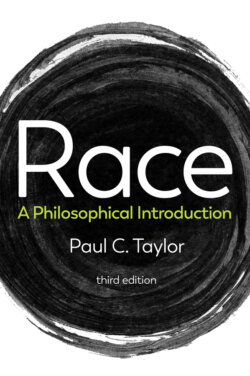Читать книгу Race - Paul C. Taylor - Страница 11
1.2 Setting the context
ОглавлениеThere’s more to say about what it means to approach race philosophically. But showing is usually better than saying, and this particular philosophical showing can’t begin until I settle a couple of preliminary issues. The first thing to explain is how, why, and to what extent the discussion to come will be limited to a specific context.
I’ll frequently refer in what follows to “what we mean” and to “our ideas” (or “our practices” or “our concepts” and so on). This is a way of making clear how deeply the practices of racial identification rely on context. People have become fond of noting that race works differently in different times and places. Philosopher Michael Root has eloquently made the point by saying that race does not travel.3 He says this because children in the USA who share both parents are thought to belong to the same race while in Panama this need not be the case, and because a person who counts as white in São Paulo might be black in San Francisco. If racial identification works like that, then it’s inappropriate for a discussion of such matters to be too abstract, to pretend, as discussions like this sometimes do, that “race” points to the same thing everywhere and for everyone.
In light of considerations like these, I use “we” and “our” expressions as a reminder of something I’ll now declare explicitly. I’m writing from someplace in particular, from a perspective that I’ve learned to adopt by inhabiting it with many other people. The particular place happens to be the United States, and the perspective happens to be that of a more or less typical estadounidense. (This Spanish word for residents of the United States is more precise, and less dismissive of the other residents of the Americas, than referring to those same people as “Americans.”)
The approach to race that shapes this place and defines this perspective has been fundamentally shaped by certain originally and distinctively English ideas about human difference. These ideas involved depicting other peoples as innately savage and inferior, and they count as English rather than as British because they got their start in English assaults, literal and symbolic, on the Welsh, Irish, and Scots. (Sadly, there’s no room for that story here.)4 I’ll focus in what follows on this Anglo-American model of race-thinking, not because it is the only or the most important one, but because it is one of the more important ones, because it’s the one with which I’m most familiar, and because I can use it to make broader points about race-thinking in general.
In the same spirit of self-excavation, I have to say that in certain ways I will rely heavily on the sense of race that I’ve developed as a black estadounidense – or, as I will still say, in deference both to established practices and to the demands of expository convenience, as an African American. My version of “the black experience,” and my ideas about how to access and use it, will shape my choices regarding how to populate the fiction world that my little framing narratives disclose, and regarding the historical examples that I’ll sometimes use. But this book is specifically not another book that purports to be about race while really being about black folks and white folks. At least, I hope it isn’t that sort of book. My aim is to tell a story about race by focusing on Anglo-American practices of racial identification, which I’ve come to see and understand, and which I’ll sometimes describe, from a black perspective.
A declared focus on Anglo-American race-thinking might seem likely to frustrate, or at least to be in tension with, the aspiration toward a more general exploration of the subject of race. But the tension disappears when we introduce a distinction between race and races. Race doesn’t travel in the sense that the same person might belong to different racial groups in different places and times, or in the sense that different cultures determine race membership in different ways. The terms in a racial vocabulary – “black” and “white” and so on – pick out people here that they wouldn’t pick out there, which is to say that the races, with their specific constituents and conditions of entry, don’t travel. But if a culture distinguishes and categorizes people using methods that appeal in part to such things as the way people look, then we might say of that culture that it has a concept of race. And exploring our uses of this concept might tell us something about what it means to think racially, whatever the categories and membership criteria happen to be. In this sense, race, as a principle of social differentiation, does travel.
